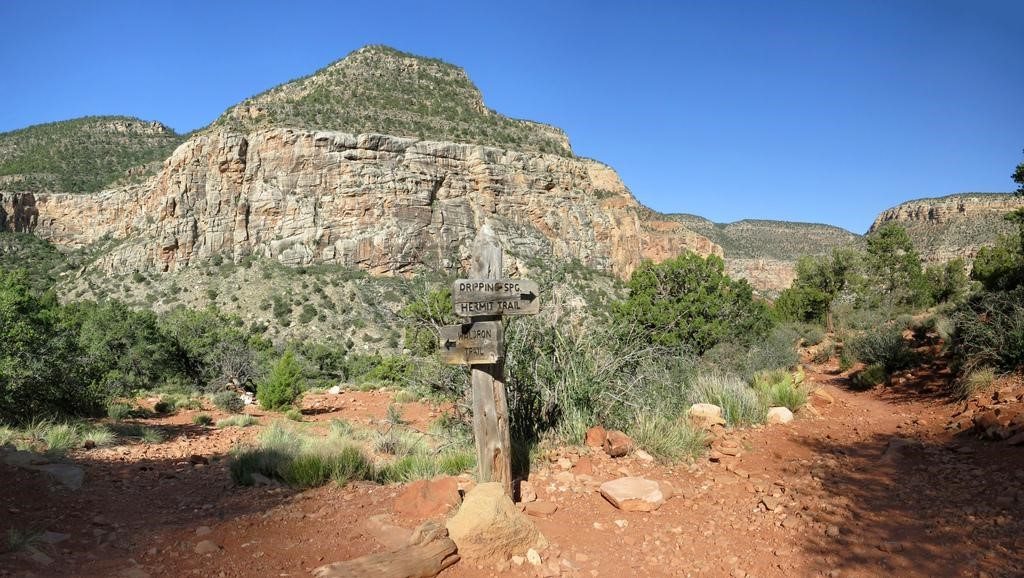
Hiking in Extreme Weather
Some of the most difficult hikes in the country aren’t just difficult because of the slopes or rugged trails; they’re difficult because of the weather. While weather conditions shouldn’t deter you away from hiking places, it certainly should be something you consider before making a trip. Extreme weather can be very dangerous, so make sure you are prepared for it all before you head out.

Extreme Heat
If you’re looking for a great experience backpacking, then you’ll know that many of the best hiking spots are in extremely hot places. Temperatures in desert regions of the United States can go well over 100 degrees, and the dry, arid environments can be a danger zone for anyone.
Know the specific problems heat can cause
Knowing the problems extreme heat can cause is vital. The first thing that can happen is dehydration. While this can occur in any type of weather, it’s more likely to happen in extreme heat. In this weather, you can lose up to a 2 quarts of fluids an hour. If your lips and mouth feel dry, you feel weak, lightheaded or dizzy, then you’re dehydrated.
The type of dehydration that results from losing fluids from your body can lead to heat exhaustion; a more extreme dehydration. With this, you might experience nausea and vomiting in addition to other symptoms. If heat exhaustion is not treated, it can lead to heat stroke, a very serious form of dehydration which requires immediate medical attention. This is when your body has reached a certain high temperature and is no longer able to cool itself down.
Prevention and Treatment
The most important thing when hiking in extreme heat, especially in the summer, is to NEVER hike when the sun is highest, which is usually between 10 AM and 4 PM. Although this may result in losing some valuable hiking time, it’s better to be safe. Plan your trip accordingly, and bring a flashlight to hike at night.
Drink a lot of water, but make sure you compensate with salty snacks. Too much water can result in hyponatremia, which is when you have too much water and not enough electrolytes. Balance is key. Additionally, wear a hat and other means of sun protection. Some hikers even bring shade umbrellas.
Of course, always wear sunscreen. Have first aid supplies on deck in case of heat exhaustion, and if it does occur, the most important thing is to get your body temperature down. You can do this simply by putting cold water on yourself repeatedly. Take all symptoms seriously and don’t second guess getting medical help.

Extreme Cold
As far as extreme cold goes, it’s quite hard to avoid for those true backpackers who like a challenge. Some of the most thrilling mountain peaks or long-term hikes are in the coldest regions of North America, and sometimes a jacket won’t be enough to withstand the low temperatures.
Know the specific problems cold can cause
Hiking in extreme cold can present multiple dangers. The first one to look out for is frostbite. While most hikers are aware when their outer extremities begin losing feeling, by the time you get to that point, it may be too late. Frostbite can sometimes results in amputation, and you surely don’t want that.
Extreme cold can also lead to hypothermia; quite the opposite of heat stroke. This means your body has lost its ability to keep itself warm. You might experience extreme shivering, inability to control muscles, and even the ability to speak properly because of trembling.
High winds can also lead to wind chill, which is dangerous because the symptoms may not be as recognizable at first. This can cause your body to lose heat even faster. Additionally, over exerting yourself hiking is easy, but in colder temperatures, your body experiences the exertion even more. This can strain the heart.
Prevention and Treatment
To prevent problems caused by extreme cold, the first thing is to layer up. Wear insulators, proper gear, and be aware of your body at all times. If you have on a lot of layers, your body can also be too warm without you realizing it, which can lead to other issues. Additionally, don’t hike at the coldest times of the day; early in the morning or late at night when the sun’s down is best.
Frostbite can be prevented by protecting parts of the body which ‘stick out’ the most. Your nose, fingers, toes, etc. If these areas start to lose warmth, they will appear discolored and numb. Cover up and check often. Hot Hands aren’t a bad idea, as well as allowing opportunities to let your body heat up again.
Once outer extremities get cold, the rest of the body can cool down rapidly. Wear wind-resistant gear, and if you think you’re experiencing hypothermia, remove and wet or cold clothing immediately and replace with dry clothing. Body heat from another person or drinking warm fluids can help get your temperature up again.













